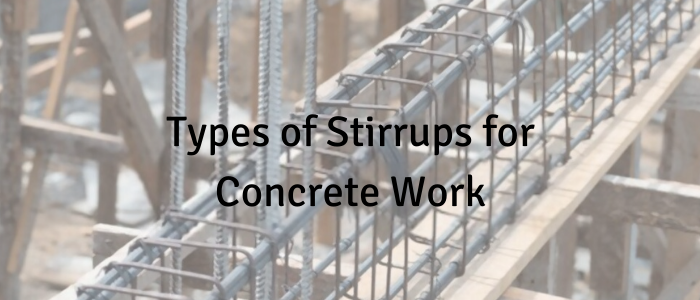What are Stirrups?
A stirrup is a closed loop of reinforcement bar, which has a main function of holding the main reinforcement (RFT) bars together in a reinforced concrete element. Stirrups can come in multiple shapes according to the design and shape of elements. The stirrups used are typically made out of a steel piece which is wrapped around top and bottom bars of the beams (rectangular shape) or columns (rectangular or circular shape). Stirrups assist in holding the reinforcement bars in place. The use of stirrups is needed to prevent the columns and beams from buckling and assist in resisting lateral loads (e.g. earthquake loads).
Stirrups are typically placed perpendicular to the longitudinal direction of RFT and sometimes placed diagonally. This is done to prevent shear failure which is usually diagonal in case of cracks in beams. The use of stirrups is done to better manage the shear capacity. The spacing of the stirrup along the beam is important and should ideally be specified by the designer.
Stirrups are used to keep everything in a straight line. Stirrups help keep order and also add strength to the structure at critical points of probable vulnerability from use over time.
Basic Types of Stirrups
These are the steel bars vertically placed around the tensile reinforcement at suitable spacing along the length of the beam. Their diameter varies from 6 mm to 16 mm. The free ends of the stirrups are anchored in the compression zone of the beam to the anchor bars (hanger bar) or the compressive reinforcement. Depending upon the magnitude of the shear force to be resisted the vertical stirrups may be one legged, two legged, four legged and so on as shown in the below figure.
It is desirable to use closely spaced stirrups for better prevention of the diagonal cracks. The spacing of stirrups near the supports is less as compared to spacing near the mid-span since shear force is maximum at the supports.

Read Also
